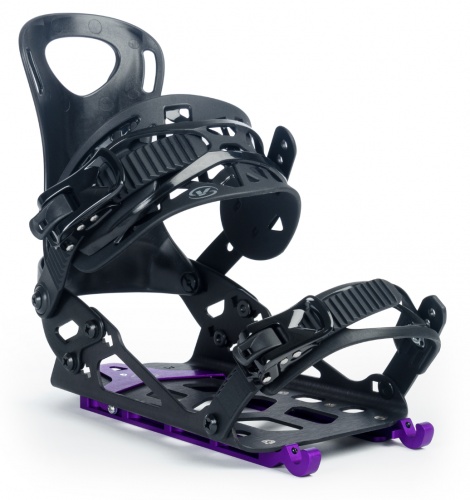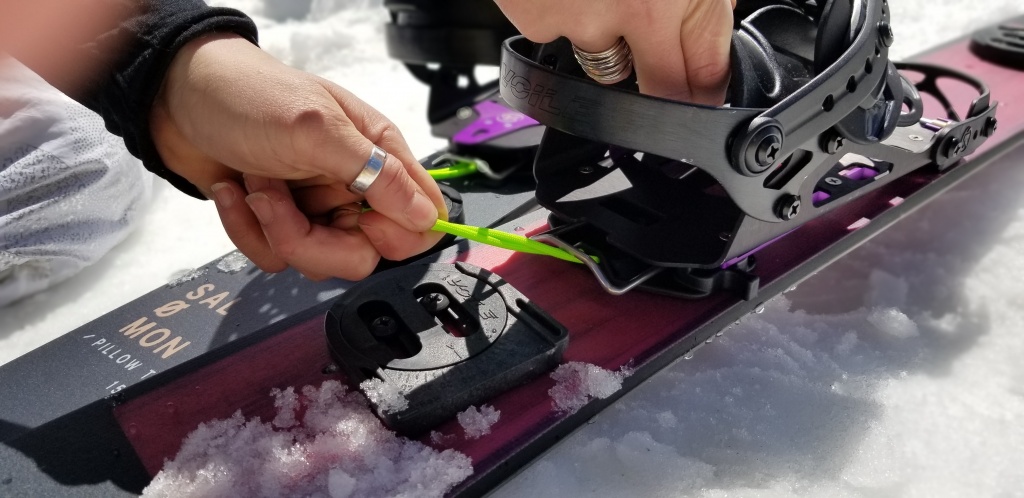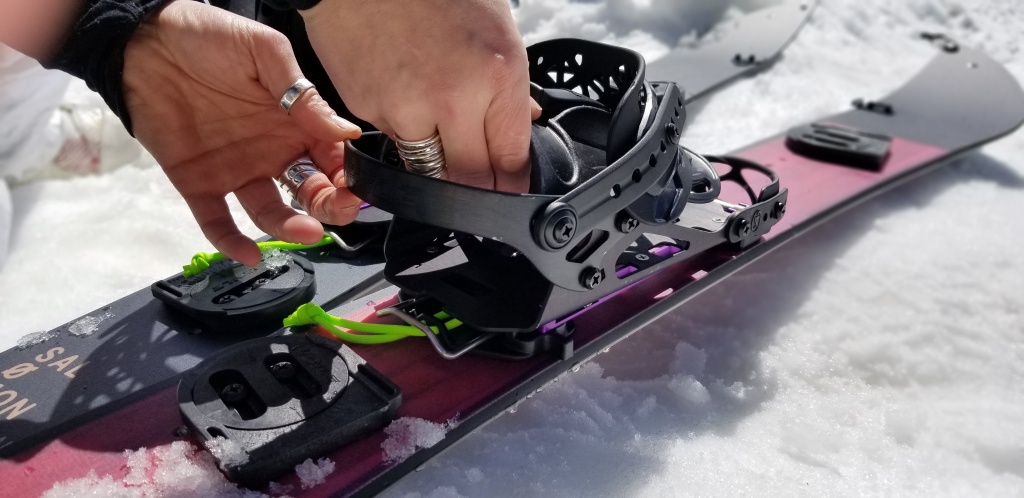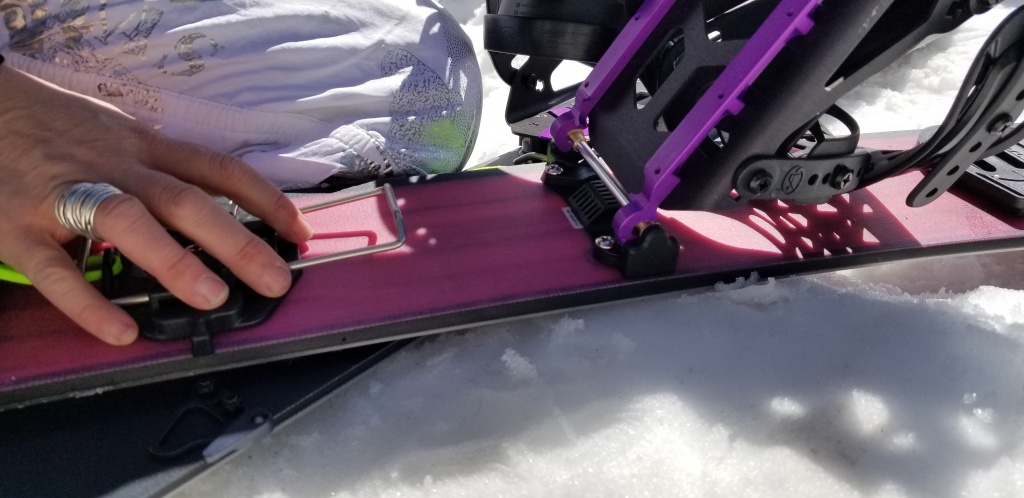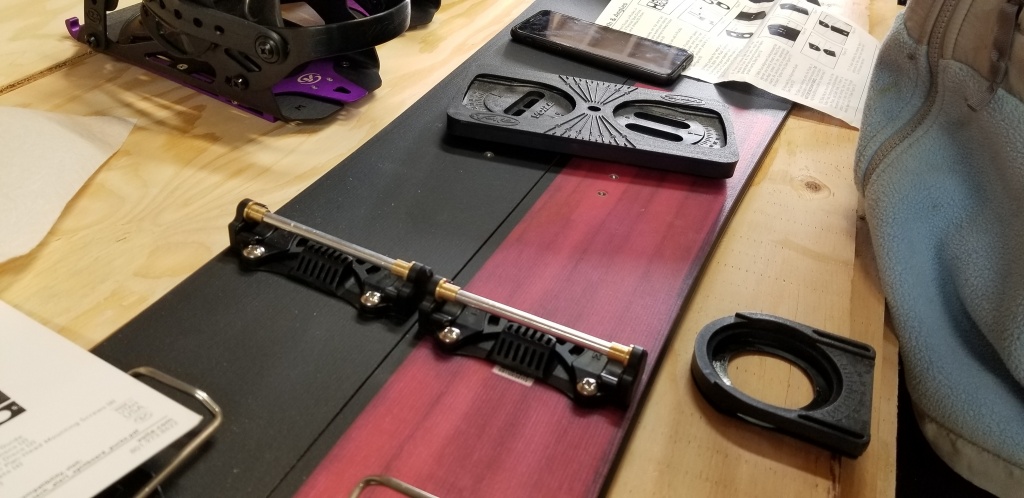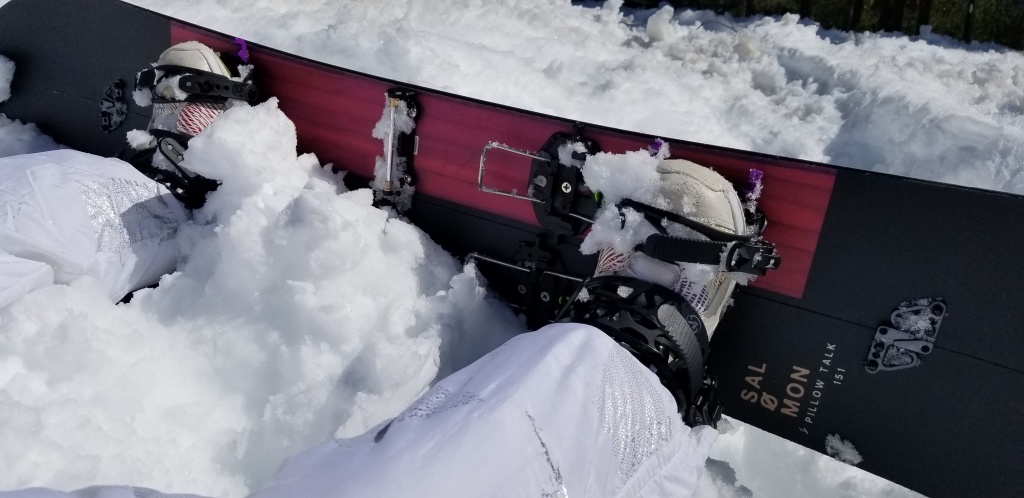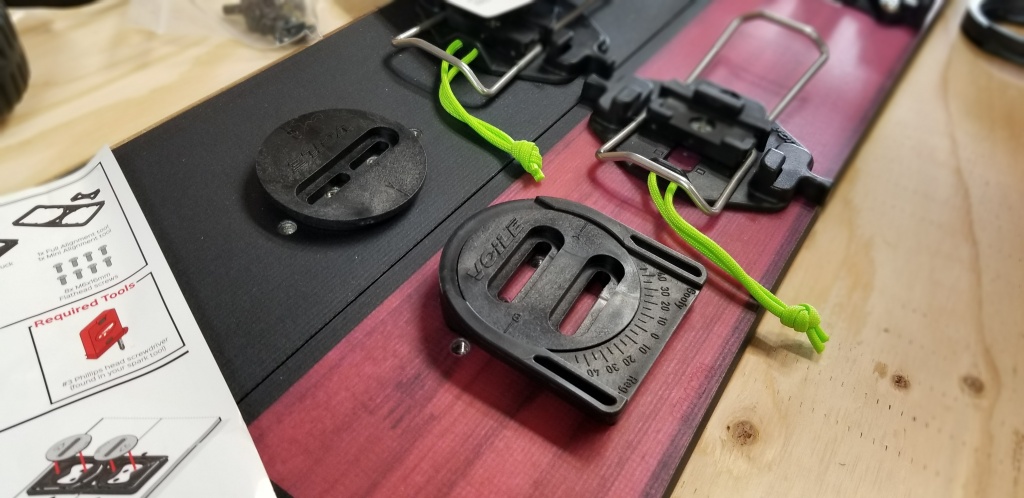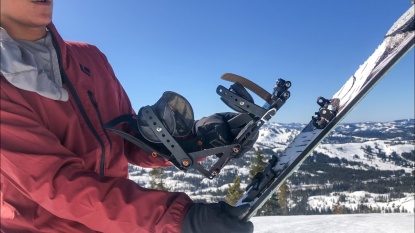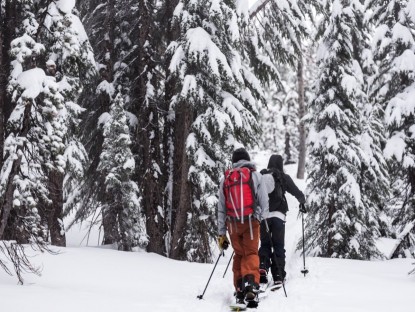Voile Speed Rail - Women's Review
Our Verdict
Our Analysis and Test Results
We did find that it can be a little more involved when it comes to installing the Voile Speed Rail on your splitboard, particularly when it comes to the heel riser/heel lock plate. It can take some muscle to bend the risers into the correct position on the plastic piece and keep them there while you screw the bracket down to the board. This isn't a huge deal since you only have to do it once, but it was enough of a hassle that we didn't remember the installation process fondly. These bindings are a good option for anyone who is a fan of the heel lockdown or if you hate pin systems for locking the binding to the board in touring mode.
Performance Comparison
Uphill Performance
Responsible for 20% of the final score for each pair of bindings, we started off by comparing how each pair of bindings felt while skinning uphill. The Women's Voile Speed Rail performed okay in this metric. They pivot fairly freely in touring mode and offer a huge range of motion. The highbacks have enough negative lean and can flex enough that these bindings are decently comfortable for long tours, all while providing enough support to let you effectively use your edges to cut into the snow while sidehilling.
Weight
Next, we evaluated and scored each pair of splitboard bindings based on their weight. This is responsible for 10% of the total score for each product, with the Voile Speed Rail earning an average score for being a little on the heavier side.
The small pair weighs around three pounds, four ounces (1.48 kg), while the medium pair tips the scales at three pounds, six ounces (1.53 kg). While this isn't that much heavier than the lightest pair in our review, even an ounce of extra weight on your feet can have a disproportionately fatiguing effect compared to extra weight in your pack.
Transitions
Responsible for 30% of the final score for each pair of bindings, our next series of tests focused on what can be the most infuriating part of any splitboarder's day: transitioning from touring to ride mode. We awarded points based on the time and effort it took to switch the bindings, such as if it can easily be done with gloves, and if the mechanism was prone to icing up. The Speed Rail did fairly well, earning an above average score.
Immediately, we will admit that the Speed Rail gave us some of the shortest transition times out of any bindings that we have tested — when everything worked properly. You just need to rotate the binding all the way forward and pop the hooks off the touring bar. Assemble your splitboard and then slide the Speed Rail over the pucks and lock them into position. This usually clears any snow that has built up around the pucks, so icing generally isn't an issue when going from tour to ride mode.
There is no fiddling with pins or other locking mechanisms when attaching or freeing the bindings from touring mode, but the hooks can get bound up if they aren't aligned properly or have iced up. It also feels like you do have enough leverage to damage something if you force it so it's worth double-checking that everything is aligned properly before you force it.
Downhill Performance
The downhill performance of the Speed Rail is responsible for 30% of its overall score. Points were based on how each pair of bindings felt on the descent and how much control they gave you over your board. The Speed Rail impressed us quite a bit, earning a relatively high score.
It's easy to lock the “Ride-N-Stride Highback” into the downhill position, locking in your preferred forward angle. It's also plenty stiff, giving you plenty of control over your edge position and angle, while still offering enough flex for a fairly fun and surfy ride down.
Straps, Lean, and Risers
Our last metric focused on some of the various components of each binding, which is responsible for the remaining 10% of the final score. The Speed Rail did fine, meriting an average score.
StrapsThe ratchets on the Speed Rail straps operate smoothly enough but they didn't release or engage quite as easily as some of the offerings from other brands. The straps are decently comfortable and securely hold down your foot, but again, we think there are some slightly more cushy options out there.
LeanThe lean adjuster on the highback did make a fairly positive impression on us. It's very easy to use — even with gloves on — simply by pushing on the top or bottom of the pivot to change between a negative lean for touring and a positive lean for the downhill. However, you can't adjust the angle of the forward lean without a snowboard tool to tighten or loosen the screw.
RisersWe think the pair of riser bars on these bindings are fine but have a ways to go before we would call them fantastic. Right from the get-go, it took a bit more effort to install them than we would have liked, and can take a little practice to get the hang of using your pole handles to fold them up or down. However, we did like the bonus heel lockdown feature, which can be very reassuring when descending in touring mode for newer riders or those that aren't fans of free-heel skiing on a splitboard.
Value
While the Speed Rail isn't the best bargain option, it usually retails for a bit less than many of the other top-tier products, making it at least worth your consideration if you are shopping on a limited budget.
Conclusion
All in all, the Women's Voile Speed Rail is a solid, all-around ladies-specific splitboard binding. It might not be our absolute favorite, but it more than gets the job done. It's got just about all the features you would want but is a little heavier and scores just a bit worse than the top-tier models.


